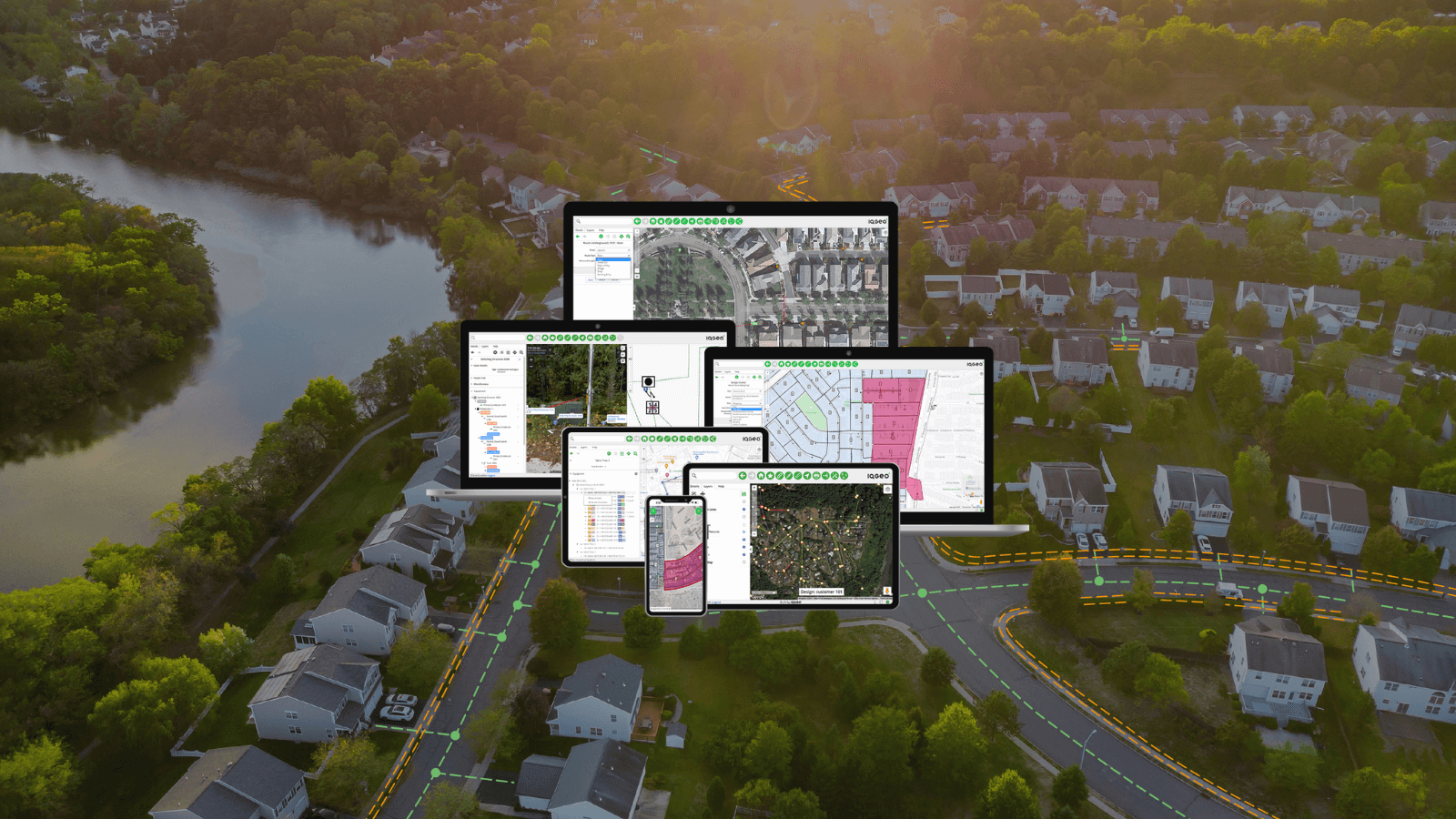We rolled out our new IQGeo branding for the first time at DistribuTECH 2019 last month, where there was a lot of the discussion focused around some key trends affecting the utilities sector. In this blog we summarize some of the challenges facing gas and electric providers, ranging from the constantly evolving issues around data quality to the increasing demand from both regulators and consumers for ‘green’ solutions. Not to mention important conversations about vegetation management and ageing infrastructures. All hot topics right now that made for a very interesting and informative DistribuTECH 2019.
Vegetation management
The wildfires in California during 2018 have ensured that vegetation management is at the top of the agenda for utilities, and with continued pressure from regulators and consumers, it will remain so during 2019 and beyond. Vegetation management is frequently the single largest line item in annual operating budgets, exceeding $100M annually in many larger utilities[1]. At DistribuTECH, Elizaveta Malashenko, deputy executive director of the California Public Utilities Commission, said that utility ignitions are responsible for about 10% of all wildfires in California. Vegetation contact with transmission lines and wire/splice failure account for about half of all utility infrastructure fire ignitions[2].
Safety is always the number one concern, but vegetation management, or the lack of it, is also one of the highest risks to the reliability of the transmission and distribution (T&D) and needs to be addressed in order to reduce the number, duration and impact of power outages. By integrating data from a variety of sources on a single architecture, utilities can manage their geographically dispersed network assets. This enables them to easily identify areas of concern or that need to be addressed and act quickly.
The green factor
Electric Vehicles
The rapid increase in demand for Electric Vehicles is another trend that is getting many in the sector excited. According to Bloomberg, by 2040 55% of all new car sales and 33% of the global fleet will be electric. Many delegates at the event believe that this trend is going provide a massive opportunity for electric utilities, delivering an increase in demand with the potential of major revenue growth.
Decarbonization
Another key theme from the event driven by environmental concerns was the issue of decarbonization. Regulators and consumers are pushing to migrate from coal and gas generation to wind and solar. This presents an opportunity for electric utilities to create the ‘green energy packages’ for large enterprises, which could help win strategic deals. There are still many challenges around this, namely the unreliability of wind and solar compared to base load, but it’s another important business consideration for utilities in the year ahead.
Distributed Energy Resource Management
There is a proliferation of power generation and storage devices connected to the grid: rooftop solar, batteries, wind and solar farms. These are potentially displacing power that the utility used to deliver, which means a loss in revenue. Distribution infrastructure has been historically designed for one-way delivery of energy from centralized generation to the customer premise. Now there is energy flowing in the other direction. The sector needs to look at new infrastructure and control systems to monitor and balance this, much more complex, mix of supply (DERMS). Commercial battery technologies are approaching the stage where large businesses can install batteries behind the meter, charge batteries during low energy cost periods, and selling power back to utility at high cost times.
Data quality
- The data quality gap
One of the big issues for utility providers is actually identifying exactly where the gaps are in your data. Many utilities are forced to make assumptions based on what they can see in their GIS model. While the data model is there, many of the data fields will actually be empty. An analytical tool can flag exactly where the gaps are, enabling them to either pull in data from another source, or deploy field teams to collect the missing data.
- Feeding the ADMS
An ADMS is only as good as the data loaded into it. Often GIS data does not include the right network connectivity in certain parts of the network, making valuable activities such as network tracing impossible. It means that field workers are unable to find the right information on which customers are connected to which transformers and circuits while they’re in the field or in the Operations Center.
- Data analytics
Data analytics relies heavily on data quality. To make informed decisions, it is vital that utilities have access to high quality consistent data as when and they need it, wherever they are and whatever device they are using. Seems obvious but many utilities are unable to verify the quality of their data using their current systems.
The future of GIS
Emerging and innovative technologies create new opportunities for utilities, enabling them to face these challenges while providing alternatives to established systems that require significant investment and disruption to update and maintain. There is a real feeling among utilities that it is time for a change. Traditional GIS struggles to deliver the mobile technology agility and cost-effective economics that are essential for network digital transformation. In addition, the disruption and cost caused by major upgrades of these legacy systems is not just going to deliver compelling return on investment.
At DistribuTECH 2019, IQGeo launched our next generation end-to-end geospatial platform designed to address the realities of the rapidly changing energy ecosystem. Based on our proven myWorld* platform, it offers a new solution that goes far beyond traditional GIS solutions to deliver a step change in productivity and collaboration for utility and telecom network operations.
The utility industries are facing more challenges today than they have for decades. The trick will be to turn these challenges into opportunities, and at IQGeo we believe that this is possible with bold vision and the right technology.
Read more about IQGeo's transformative next generation geospatial technology that challenges the conventional role and capabilities of legacy GIS environments.
[1] https://events.pennwell.com/dtech2019/public/SessionDetails.aspx?FromPage=Sessions.aspx&SessionID=23787&SessionDateID=620
[2] https://www.smart-energy.com/event-news/vegetation-management-not-sexy-but-vitally-important/
*myWorld is now the IQGeo Platform
The 6.0 release of our software included a product name change from myWorld to the IQGeo Platform. This change reflects our focus on the IQGeo corporate brand that was launched at the beginning of 2019. Our website and latest product user interface have made the transition from the old myWorld name to the new IQGeo Platform name. Learn more about the IQGeo Platform 6.0 release.

Former Director of Utility Product and Services at IQGeo
Similar articles:


 Previous
Previous







